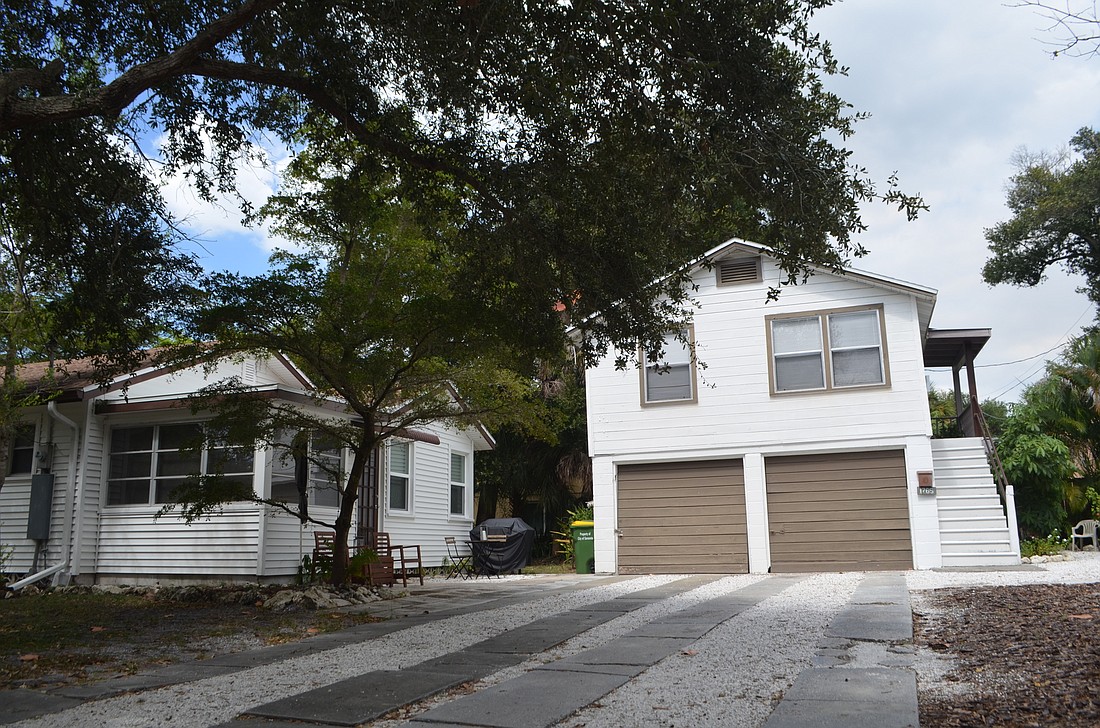- April 26, 2025
-
-
Loading

Loading

As the city’s Planning Board discussed staff’s proposal to allow accessory dwelling units in three single-family neighborhoods, board member Terrill Salem asked a question: Why not citywide?
In a report, planning officials said expanded use of accessory dwelling units — smaller secondary units on lots with a single-family residence — was part of a broader strategy to address a shortage of affordable housing in Sarasota. Staff cited the 2018 Blueprint for Workforce Housing, a report the Florida Housing Coalition produced with a series of recommendations for the city and Sarasota County.
Although one of the top recommendations in that report is related to accessory dwelling units, the city’s proposal stops short of what the Florida Housing Coalition endorsed. The Blueprint for Workforce Housing said Sarasota officials should permit accessory dwellings in all single-family neighborhoods.
Planning officials said they targeted three neighborhoods for allowing accessory dwelling units — Arlington Park, Bayou Oaks and Central Cocoanut — because residents there had expressed an interest. At the Sept. 9 Planning Board meeting, the board voted to recommend the inclusion of Newtown, as well.
Planning Director Steve Cover and Planning General Manager Ryan Chapdelain said they opted for narrower regulations because they were concerned about the prospect of passing something more expansive, particularly if it sparked opposition from some residents.
“We wanted to get something in place,” Cover said. “If we went citywide, and it potentially got voted down, we would have nothing to work with.”
Board members Kathy Kelley Ohlrich, Patrick Gannon and David Morriss said they believed the city should work to earn neighborhood-level support before allowing accessory dwellings in a new neighborhood.
Morriss said residents had valid reasons to oppose accessory dwelling units in their neighborhood, suggesting some people did not want to have individuals renting a residence next to the home they own. Morriss also spoke in opposition to Salem’s proposal to remove a requirement that a property owner must reside in one of the units on a lot if an accessory dwelling unit is built, which the Planning Board rejected.
“Say someone owns 40 houses, and now all of a sudden they can put affordable housing units or accessory dwelling units on 40 of those lots,” Morriss said. “That’s good for them, and it may be good for the overall stock of affordable housing, but it wouldn’t necessarily be good for the neighborhood adjacent to it.”
As the accessory dwelling conversation advances to the City Commission, Cover made clear this proposal alone wouldn’t serve as a major salve for Sarasota’s affordable housing shortage. He said it was part of a suite of changes intended to address the issue. Forthcoming proposals will seek to facilitate higher densities for affordable projects in certain areas and easier construction of some smaller multifamily buildings with up to eight units.
“We have no intentions of just nibbling away at this,” Cover said.
Cover also hoped that the limited expansion of accessory dwelling units would, in the future, make it easier to build community support elsewhere. At the Planning Board meeting, Cover estimated it could take years to get each neighborhood in the city to buy in. If this smaller program goes well, Cover hopes it will eventually empower the city to consider more ambitious ideas.
“You start building up a little track record of success, then people become more and more open to trying other things,” Cover said.